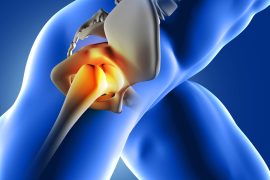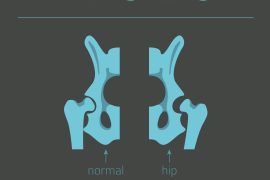Pain in any part of our body can be severely restricting. More so when the pain prevents us from leading our normal lives and carrying out our favorite activities, like the pain experienced by those who have chronic hip pain whether due to trauma or arthritis. The most unfortunate part about this pain is that it severely hampers the patient’s mobility; leaving them confined to their rooms or at the mercy of a cane or walker.
Total Hip Replacement or Total Hip Replacement is most and often the best option for patients in this situation. But how does one come to the realization that surgery is required or what is an orthopedic surgeon looking for before recommending surgery?
More often than not, these symptoms are:
- Chronic hip pain that hinders daily activities and is unabated by non-invasive therapies like weight reduction, physical therapy and painkillers. Lack of sleep due to pain is also an indicator that a Total Hip Replacement is required.
- If the stiffness of the hip prevents the patient from going about their daily lives.
- Inability to stand on the affected leg without support for even a minute.
- The patient can no longer walk short distances.
- Pain that is beginning to affect the patient mentally as well as physically
- The patient is experiencing severe side effects of pain-killers.
- Last but not the least, the doctor has determined that non-invasive or conservative treatments are no longer effective or helpful.
Is a hip replacement safe and successful and what restrictions will that place on the patient?



A large majority of Total Hip Replacement Surgery are successful with most patients experiencing significant relief from their symptoms. While there are some risks like infection and blood clots associated with Total Hip Replacement, they are easily preventable. Overall, the procedure is one of the safest surgeries to undergo, with millions of patients getting their hips replaced every year. The evolving technology and surgeon skills are also improving the procedure every day. New and improved implant design also reduces the chances of dislocation. As to post-surgery restrictions, patients who decide to undergo a Total Hip Replacement should adapt a few permanent changes to their posture for the maximum benefit and in order to prevent any negative effect to the hip implant.
For preventing such incidents, certain movements or activities need to be avoided. They are:
- Cross-legged sitting



- Forward Bending: Avoiding bending one’s knees beyond 90 degrees is a crucial thing to keep in mind. Postures where the knee is not below one’s hip joints can lead to complications and difficulties.



As with anything surgery related, any doubts related to one’s condition should be cleared with one’s surgeon.
How do I convince my loved ones to undergo a hip replacement?



The possibility of undergoing a major surgery can be quite intimidating to anyone especially elderly patients. Convincing them requires patience and time. While the final decision rests in their hands, here are some things that may help you in helping them make the right choice.
- Firstly, have a sit-down conversation with your loved one and their orthopedic doctor to fully understand the procedure, the risks and expected results. Encourage your loved one to get their doubts cleared by the doctor no matter how insignificant they may seem.
- Have a heart to heart conversation with them about how the procedure can help get rid of the chronic pain.
- Take them to meet other people who have undergone Total Hip Replacement recently, preferably those who have been operated on by their orthopedic surgeon. This will help them see how the procedure has helped these patients.
- Describe to them how people undergoing Total Hip Replacement can not only get relief from their pain but also regain their normal movements like navigating stairs and sit on the floor with folded legs.
- Discuss how current technology and expert surgeon availability means that they can undergo the procedure both successfully and with fewer chances of side effects.
- Alleviate their fears by providing them encouragement and assuring them that you will be with them every step of the way.
- Explain to them how keeping a positive attitude with regard to the operation will help them come through the procedure with much better outcomes.
- If they are worried about the physical therapy that will follow, then convince them that it will strengthen the muscles supporting the hip and allow them to recover faster.
The idea of undergoing surgery can be immensely daunting, even if the patient is already in significant pain. Coupled with the thought of physical therapy and recovery period, it is quite understandable for patients to refuse surgery or put it off until it’s too late. But the thing to know here is that beyond the surgery, physical therapy, and recovery, lies the light at the end of the tunnel. A light that is not only the promise of a pain-free life but also one in which the patient can regain their old life back.





